Ever wondered about converting your four-barrel carb set-up to a bolt-on EFI alternative? The team at Magnum Automotive show us an easy way to do it!
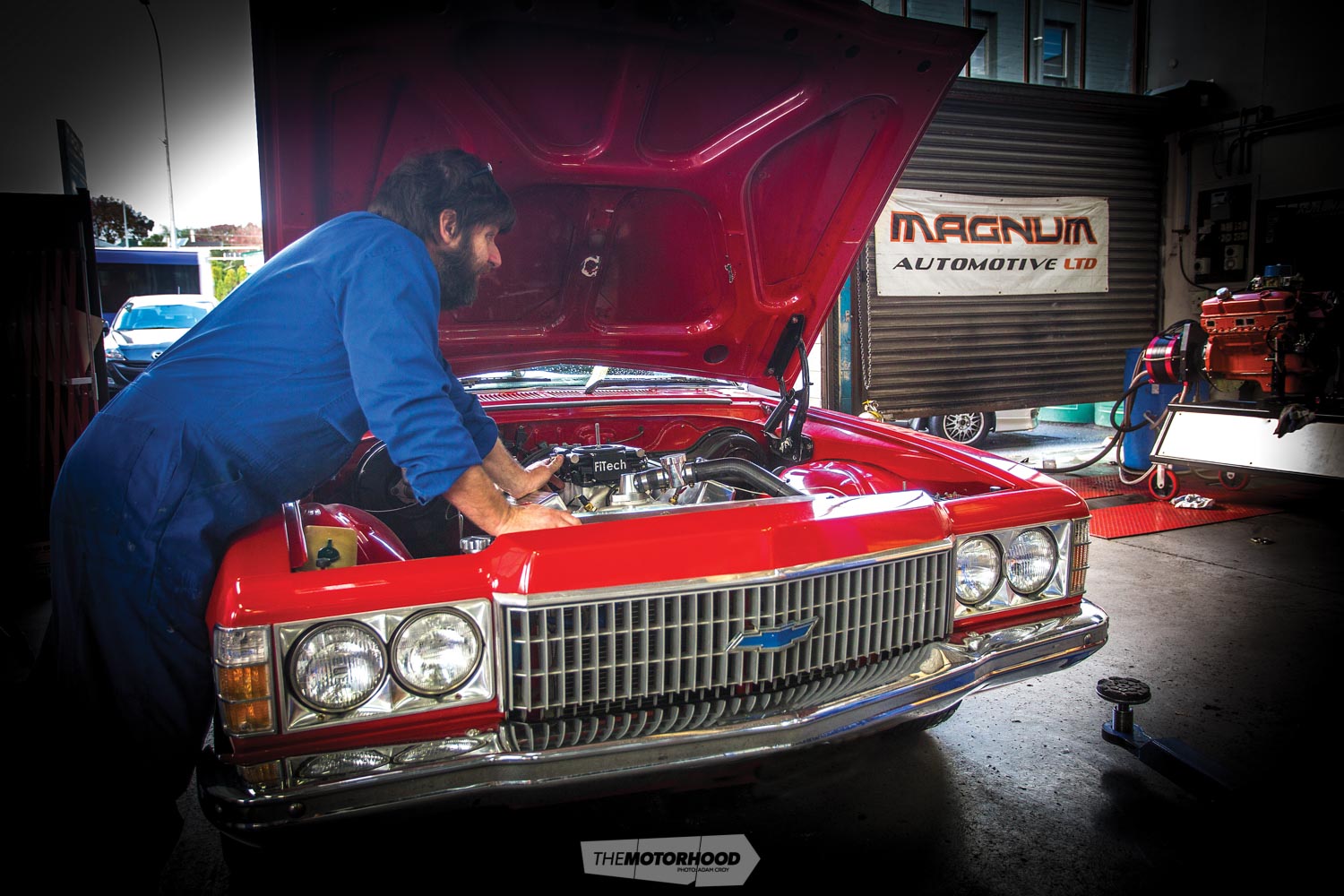
Over the last few months we’d been hearing more and more about a company called FiTech, and the fuel injection systems they produce. One of the selling points of FiTech’s ‘Go EFI’ throttle-body set-ups is their OEM-level functionality and diagnostics, making them both complex enough to satisfy experienced tuners and simple enough for the home DIY enthusiast to use. All of the company’s electronic-fuel-injection (EFI) systems are throttle body–type fuel-injection systems that bolt to any four-barrel intake, making them just the thing for swapping any carburetted V8 engine to EFI. The system requires you to do a simple initial set-up through its supplied hand controller, from which the FiTech computer creates the base map required to get the engine running. Once running, the system makes continuous adjustments to self-tune the air–fuel ratio (AFR) to the optimum target AFR you provided. This means that the AFR will be correct no matter what weather or altitude the engine runs in — the system will always make sure your engine runs at its optimal performance.
The FiTech range extends from the base Go Street EFI 400hp unit to the top of the line Go EFI 8 1200hp system, also offering set-ups for forced induction, nitrous, and naturally aspirated dual-quads. All of these, apart from the Go Street 400, include ignition control, and all will run off the ignition system already in your car — you won’t have to use the internal ignition control to operate the system.
It sounded almost too good to be true, so when the guys at Magnum Automotive told us they
were just about to install a system on their workshop hack Holden HZ ute, we decided to follow the preocess to see if it’s as easy as FiTech claim it to be. The unit they opted to use is a Go EFI 4, rated at up to 600hp naturally aspirated. This has all the EFI features, as well as ignition control but will not work in a boosted combination. For that, you’d need the Go EFI 4 Power Adder system.
Installation
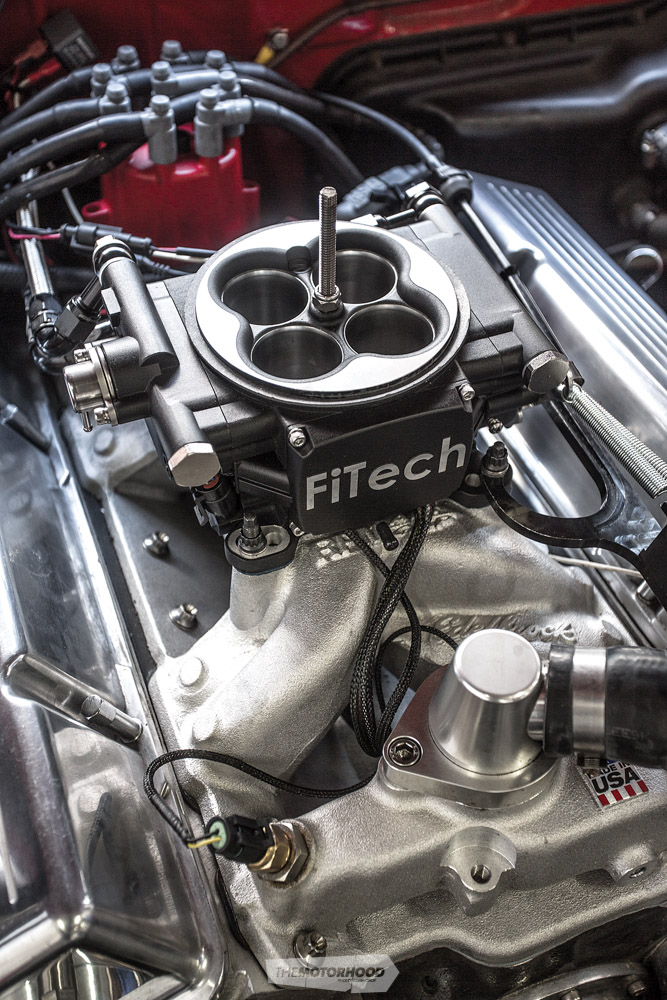
With the new system bolting in in place of your current four-barrel carburettor, the first step is relatively easy — off with the old, and on with the new. It will fit square-flange manifolds correctly, but if you are using a spread-bore intake, make sure there are no air leaks at the mounting flange. The unit will bolt on, but you may require an adaptor plate to get the seal correct.
Next, find a suitable location to fit the supplied temperature sensor. A good place is at the front of the engine next to the thermostat housing (above).
Fuel delivery
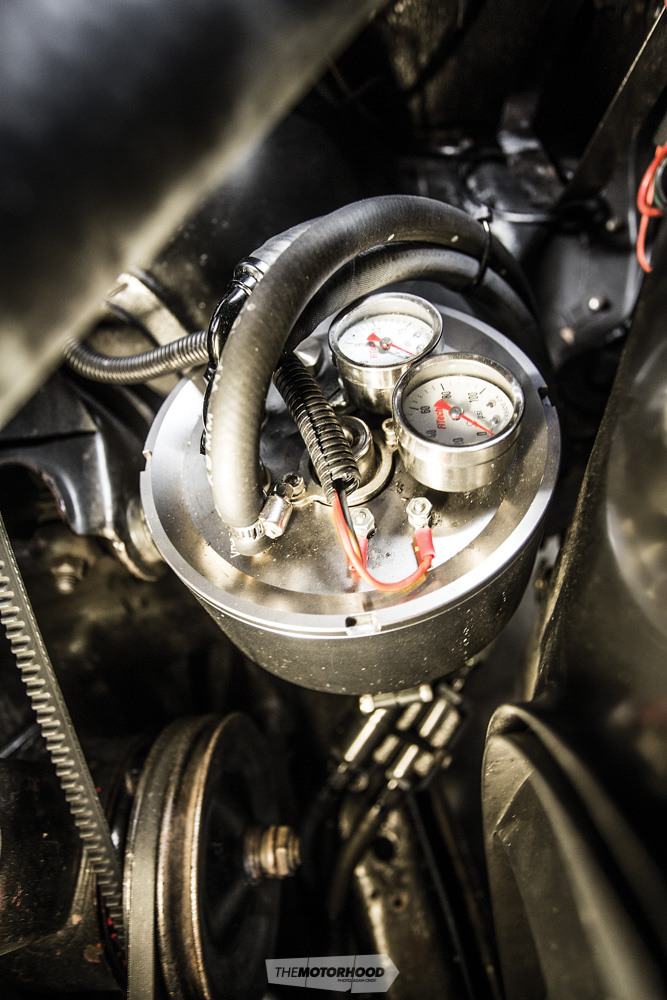
The fuel-supply system is next in line. The Go EFI needs to be supplied with fuel at a pressure of 58psi, so the 7psi system that supplies the existing carburettor won’t be suitable. Fortunately, FiTech offers several easy solutions to this problem.
1. Fuel Command Centre
This is an easily mounted small fuel tank with the correct EFI fuel pump inside (left). It’s easy to set up — simply mount it in a suitable place, using your current carburettor fuel pump to fill the tank, which has an internal float system to keep the level correct. Attach the fuel supply and return lines to the EFI body, and sort out a breather line from the tank. This must be done correctly. When this is wired to the ECU, you will have a functioning fuel-supply system.
2. Chassis Mount
This is a chassis-mounted external fuel pump, with supply and return lines to run from the tank to the EFI body. This system will need a return fitted in the tank and special attention paid to the fuel pick-up area. If the pick-up gets exposed to air under acceleration, deceleration, or cornering, the system will lose fuel supply. In these situations, Magnum has taken to installing Holley HydraMats to the fuel inlet — this eliminates fuel-surge issues entirely, although it does add to the cost.
3. Other options
Kits are available to fit EFI pumps into stock tanks, and aftermarket dedicated EFI tanks are available for some American cars, such as the Aeromotive Stealth, etc. The FiTech system has a built-in fuel-pressure regulating system, so the plumbing is relatively simple — fuel in and fuel out, back to the fuel tank (command centre). It
also regulates the voltage to the fuel pump, so, in low-demand situations, the pump is slowed down.
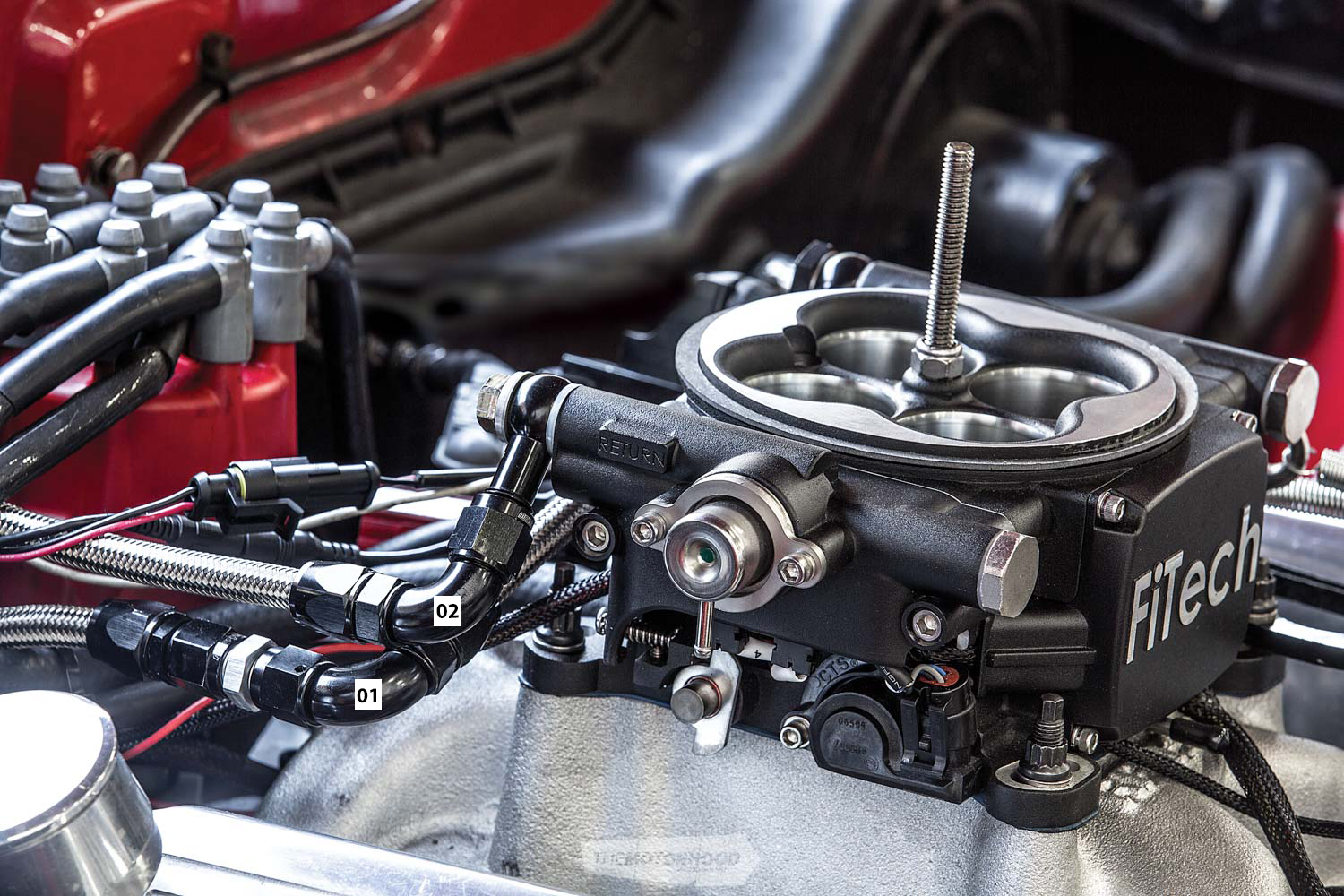
Because Magnum Automotive has elected to run an in-tank electric fuel pump, a fuel-return system must also be run. On the throttle body, you can see the fuel-feed (01) and return (02) line plumbing.
Making the install easy on the ute, was the fact Magnum had already installed an aftermarket in-tank EFI pump set-up (below). This entailed removing the tank from the vehicle, cutting a hole in the top of the tank, and fitting the kit. It has a bolt-in sump system that eliminates fuel surge. To run this with the vehicle’s existing carburettor an EFI-to-carb fuel-pressure regulator was also installed, which could now be removed.
The fuel pump wire in the supplied wiring loom may need to be extended to reach the fuel pump’s 12V power wire, but no relay is required, as the FiTech ECU controls the fuel pump directly.
Oxygen sensor
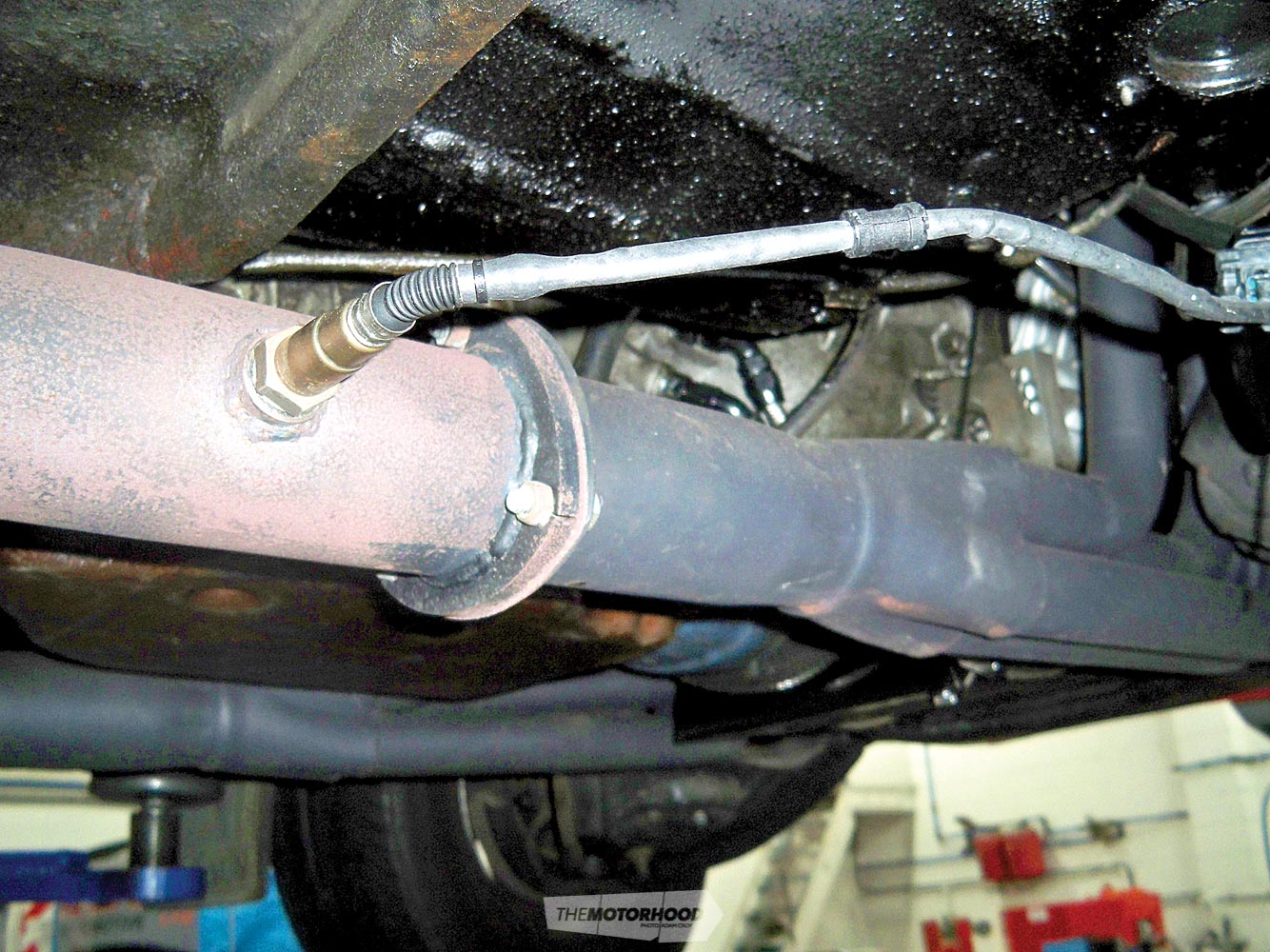
The next major component to install is the oxygen sensor. Positioning of the sensor is critical for both correct operation and sensor life. It should be fitted between two and four inches after the exhaust collector and at an angle of at least 10 degrees from horizontal to allow condensation to run off the sensor. The kit supplies a fitting for this purpose, so all that’s required is for a 7⁄8-inch hole to be drilled in the pipe. The sensor can be either clamped on — using the supplied clamp — or welded on, as was done in this application (left) and is recommended. It is important to ensure that there are no exhaust leaks, especially between the sensor and the engine, as the sensor measures the oxygen content of the exhaust gas, so if there are any leaks, the ECU will receive false information. This will lead to poor performance, misfires, and inability to auto-tune, as well as the potential to cause detonation and severe engine damage.
Ignition
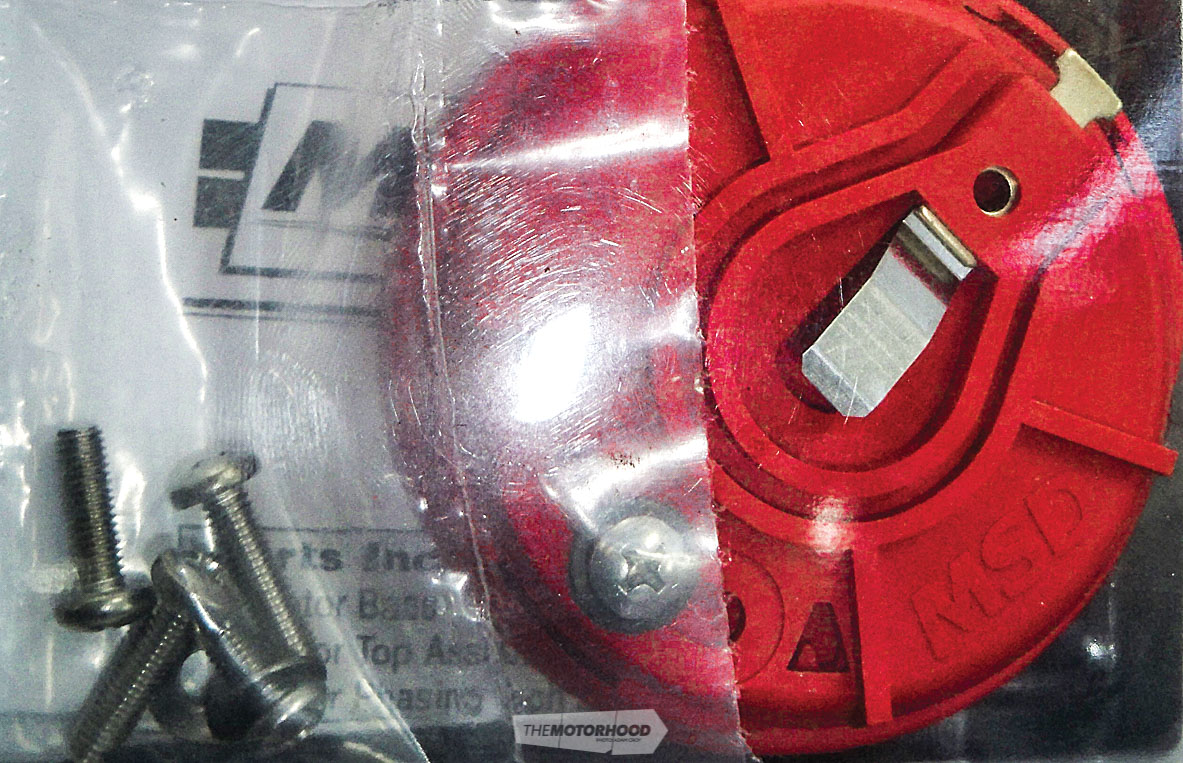
Once the oxygen sensor is installed, the next port of call is the ignition system. There are a couple of choices here. The easiest and quickest solution is to use the ignition system you already have on your engine, as long as it’s in good working condition. That way, the timing and advance curves are controlled by the distributor, as they were with the carburettor.
The FiTech system works well with all popular MSD-type ignition boxes, but the Go EFI system does have its own ignition driver and spark-control system built into the unit, meaning that you won’t need an external box to run the ignition system. To use this feature, you’ll need a magnetic pick-up distributor — MSD Pro Billet, or similar — with its advance system locked out, a phasable rotor (right), and an ignition coil; then the ignition is good to go.
Base map
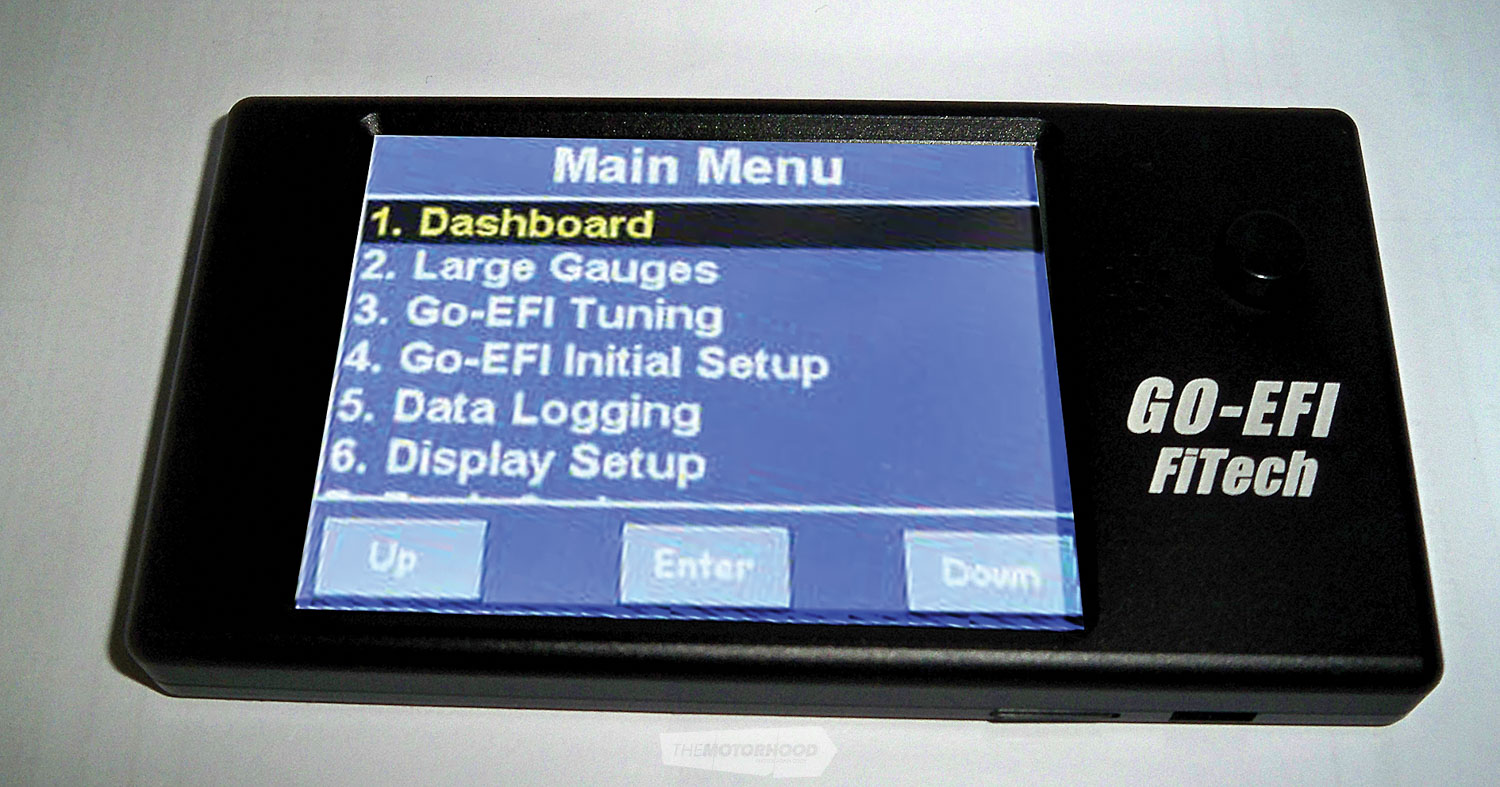
The system is now ready for you to set up the base map through the supplied hand controller. When performing this process, it is important to check you have no fuel leaks in the system, or you’ll get inaccurate readings. The instructions say to turn the key to the ‘on’ position, and you should hear the fuel pump run and a click from the throttle body. This is the fuel-prime function. Do this two or three times, and recheck for fuel leaks. Once you’re sure that you have no leaks, you can leave the ignition key on and begin to do the initial set-up process, following the instructions provided. This will get an engine running with its own ignition system. Many other features can also be programmed in; again, all are detailed in the instructions, including electric fan set-up, spark-control functions, and how to store settings.
The engine is now ready to start. Turn the key, listen for the prime click, and crank over the engine. The engine should fire right up. Once the engine is running, the closed-loop system will start correcting the AFR almost instantly.
Once the coolant temperature reaches 130°F, the Go EFI self-learning feature will take effect and begin dialling in your EFI system to your engine. The engine in the ute is a basic 350ci small block Chev with a stock bottom end, Comp Cams XE camshaft, Dart alloy heads, Edelbrock Performer RPM Air Gap intake, an Accel ignition system and previously a 680cfm vacuum secondary carburettor. It’s been on the rolling-road dyno a few times now, and the carburettor and ignition were well tuned. With the old carburettor set-up, it made a respectable 370hp at the rear wheels.
Final tune
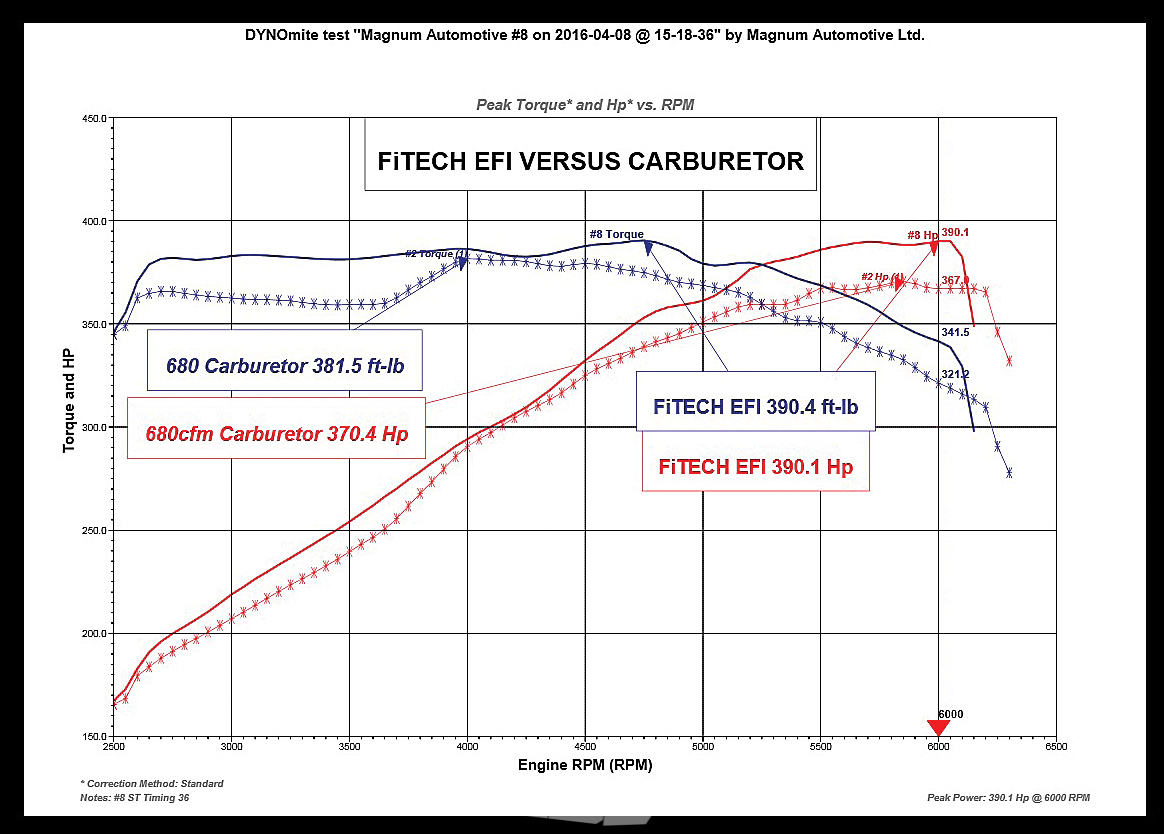
Dyno graph for the Holden HZ, showing fatter torque and power curves throughout the rev range for the FiTech system when compared with the original carb set-up.
With the Go EFI 4 unit installed and running, the boys set up the ignition system according to the instructions and ran the timing-control system as well. The ute was then placed on the dyno for some testing — more for the boys’ own interest than it being a requirement; after all, this is a system the competent DIYer can do at home. The engine was run up, letting the system make changes by driving it at certain rpm ranges and loads, as you’d do on the road. Then some full-power runs were made, to let it tune in the top end. The result was impressive — a gain of 20hp and 11lb·ft; not just an improvement at peak, but, as you can see from the dyno sheet, an improvement through the rev range — don’t forget this is on a vehicle that was already well tuned.
The last test was actually to drive the newly EFI-converted ute just as it gets driven every day. That included running it in Auckland’s traffic jams. The system performed faultlessly and gave a healthy increase in fuel economy around town and on highway running.
Easy starting, increased mileage, and more power — what other motivation could you need to change to EFI?




